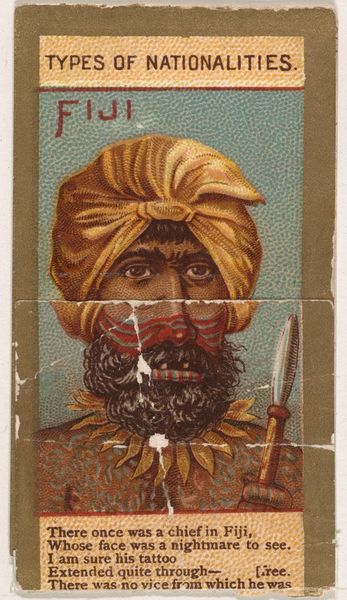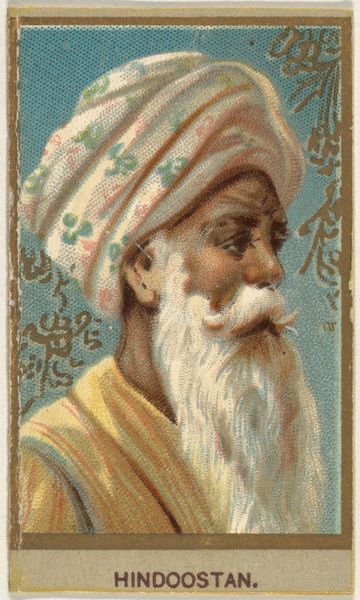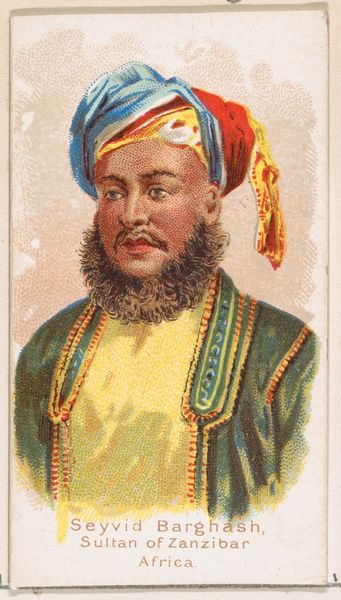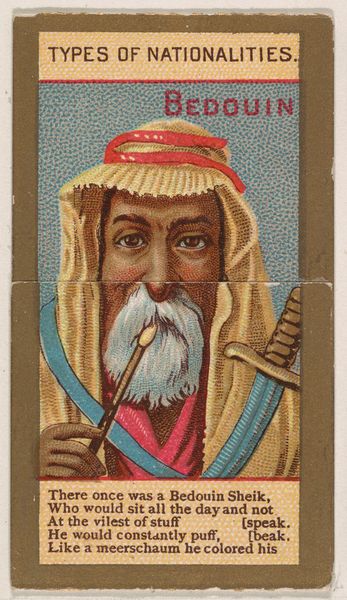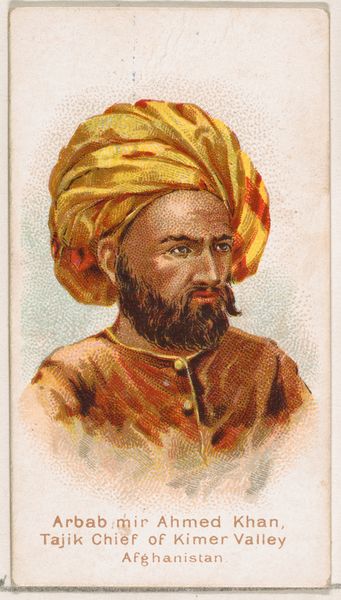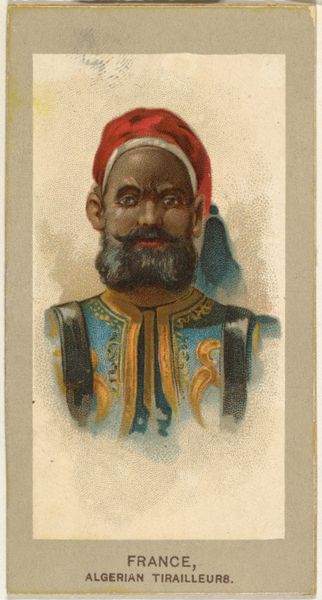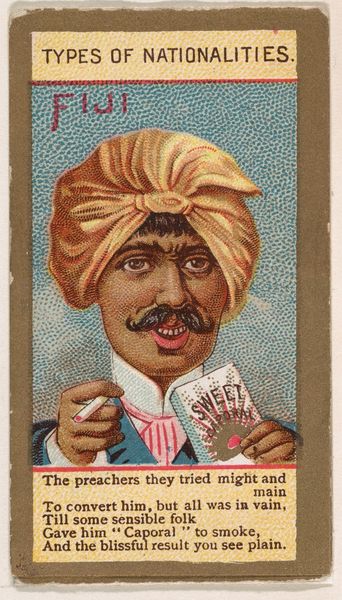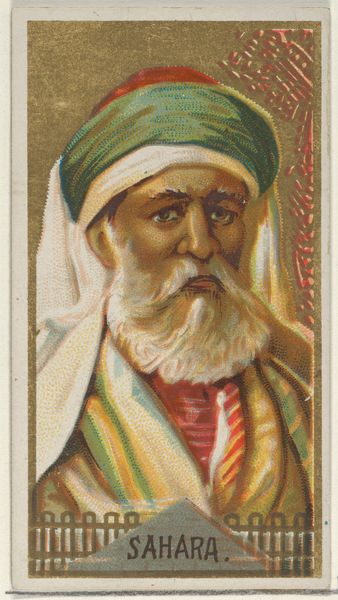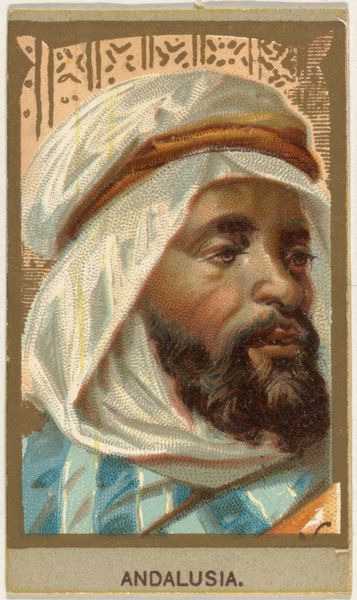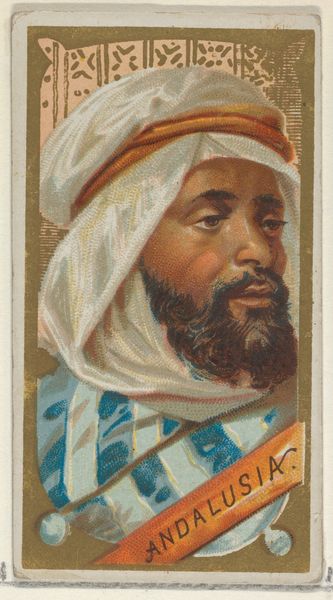
Hindoo, from Types of Nationalities (N240) issued by Kinney Bros. 1890
0:00
0:00
drawing, coloured-pencil, print
#
portrait
#
drawing
#
coloured-pencil
# print
#
coloured pencil
#
orientalism
Dimensions: Sheet (Folded): 2 11/16 × 1 7/16 in. (6.8 × 3.7 cm) Sheet (Unfolded): 6 7/8 × 1 7/16 in. (17.4 × 3.7 cm)
Copyright: Public Domain
Curator: This small print, dating back to 1890, is titled "Hindoo" and it comes from a series called "Types of Nationalities" issued by the Kinney Brothers Tobacco Company. Editor: It's a striking image! The composition is straightforward: a turbaned man smoking a pipe. But the style is what catches my eye. It feels both ethnographic and… strangely distanced. Curator: Absolutely, there’s a strong sense of Orientalism at play here. It's crucial to acknowledge the power dynamics inherent in how Western companies like Kinney Brothers represented other cultures, especially those from the East. Editor: How was this made? Was it purely artistic creation or were other material means involved? The colored pencils used lend a soft, almost romantic quality to the depiction. I would also love to find examples of this company making prints showing Western types in non-Western places. Curator: The Kinney Brothers, being a tobacco company, certainly had commercial intentions here, but it is an important thing to remember the cultural backdrop against which this portrait was conceived: the height of Western imperialism and a very shallow understanding of diverse cultures. Editor: I would consider that the artist was given certain specifications from above to create this character, almost like building an algorithm based on people. How might an individual from that cultural group perceive it and respond today, knowing the complex history of colonial representation. The print medium made art widely accessible to new audiences. Curator: And that’s the crucial dialogue we should aim for. What impact did it have on popular perceptions and what ideologies did such material help to perpetuate? The accompanying poem with its Parsee reference almost sounds like justification through pseudo-intellectualism! Editor: Looking at this, it forces us to look at how global economies participate in representing certain narratives. So even as it is beautiful, we can acknowledge what it meant when it was made.
Comments
No comments
Be the first to comment and join the conversation on the ultimate creative platform.
